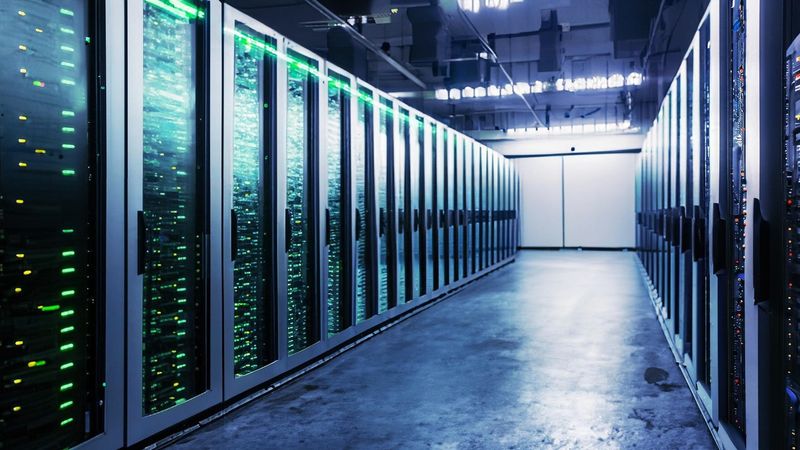Engineers explore new applications for geothermal energy
EPFL engineers have examined the use of geothermal energy in two very different applications: a metro station and an underground data center. The works had a focus on the internal airflow conditions of these structures and possible optimization of the mechanical ventilation.

A considerable amount of cooling is required in a data center. © iStock Photos
This article was first published on
actu.epfl.chEngineers at EPFL’s Laboratory of Soil Mechanics (LMS) published two journal articles that open up new prospects for geothermal energy, focusing on the optimization of the use of energy geostructures beyond conventional considerations. In the context of an Innosuisse Innovation project, the researchers collaborated with Amberg Engineering, an international engineering consultancy based in Switzerland, to evaluate two systems: a metro station in Bucharest and a data center that will be set up underground, to reduce the reliance on mechanical ventilation for air conditioning purposes. Both studies appeared in Tunnelling and Underground Space Technology incorporating Trenchless Technology Research.
Metro station
In the recent metro station study, the engineers considered a number of factors such as the effect of train movement (including breaking and acceleration) on air circulation, and heat generated from passenger traffic, thereby obtaining detailed knowledge of the stations' air domain. The system they evaluated includes heat recovery through water-filled tubes built into the station’s reinforced-concrete walls, after which the heat is carried to the surface to be used. This kind of mechanism is common in the field of energy geostructures. “We carried out two parallel simulations that take into account heat transfer from the air to the soil,” says Sofie ten Bosch, a civil engineer at LMS and the study’s lead author. “Since our models represent most physical factors found in underground railway infrastructure, they can be used to assess the geothermal potential of any new project of this type. The metro station we studied has a common design that’s employed in many underground stations worldwide.”
Underground data center
In the data-center study published previously, the engineers examined the role of geothermal energy extraction in an underground cavern that will be 300 meters long and 24 meters high. The challenge here isn’t the air-flow dynamics of a passing metro train, but rather the heat generated by the many data servers, possibly leading to underground climate change. The indoor air temperature at the center needs to be kept in a comfortable range – meaning a considerable amount of cooling is required.
Here too, the LMS team developed a numerical model that incorporates factors such as the building’s geometry, the mechanical ventilation and the capacity for evacuating excess heat by geothermal activation, which allows optimization by management of thermal energy streams within the data center. Their study found that the system helps cooling the internal air domain of the center, which reduces the ventilation requirement. Additionally, they found that if a geothermal system was installed in the data center to recover the heat and then sell it at market rates, the system would pay for itself in three to seven years. If the geothermal energy is replacing heat generated from gas-fired boilers, that could cut annual carbon emissions by 45% for this case study location.
“A growing number of data centers are being built worldwide owing to the rapid expansion of digital technology, yet very few studies have been done on the use of geothermal systems to cool the indoor air,” says Ten Bosch, who is the lead author of this study as well. Research has shown that a data center’s cooling system accounts for 30% to 50% of the total energy consumed in its operations.
Given how critical the energy transition is, Ten Bosch is happy to be able to apply her PhD research to two concrete applications. “The technology for assessing the potential of geothermal energy in a given area is now mature, and we see here that the industry is ready to explore new options for optimal use of this sustainable heat source,” she says.
References
Sofie ten Bosch, Elena Ravera, Marco Tobler, Marco Bettelini and Lyesse Laloui, “Assessing and exploiting the interaction between ventilation and geothermal systems in an underground data centre,” Tunnelling and Underground Space Technology incorporating Trenchless Technology Research, February 2024. https://doi.org/10.1016/j.tust.2023.105563
Sofie ten Bosch, Elena Ravera, Marco Tobler, Marco Bettelini & Lyesse Laloui, “Evaluating the geothermal potential of a metro station considering its airflow conditions”, Tunnelling and Underground Space Technology incorporating Trenchless Technology Research, September 2025. https://doi.org/10.1016/j.tust.2025.106697